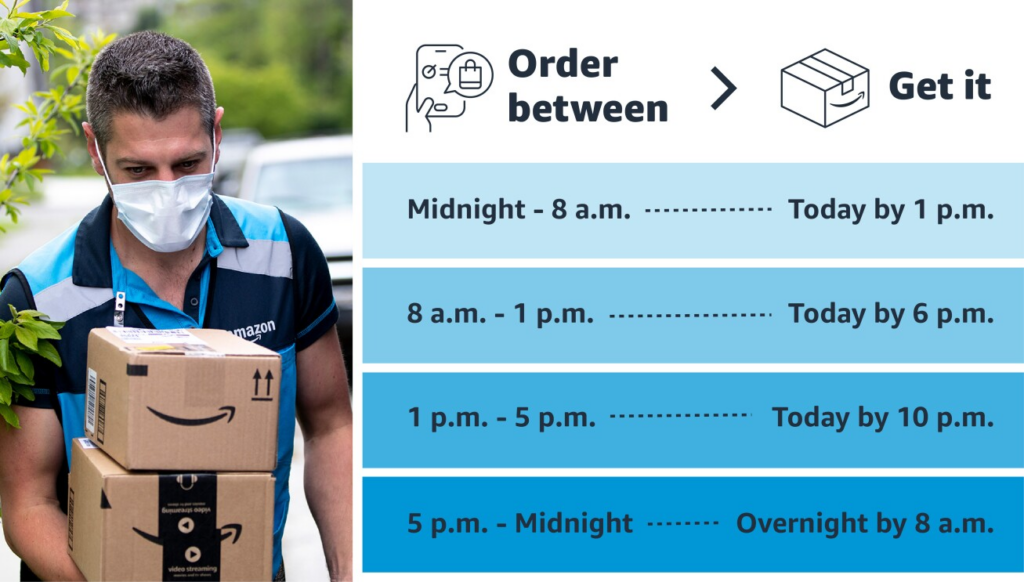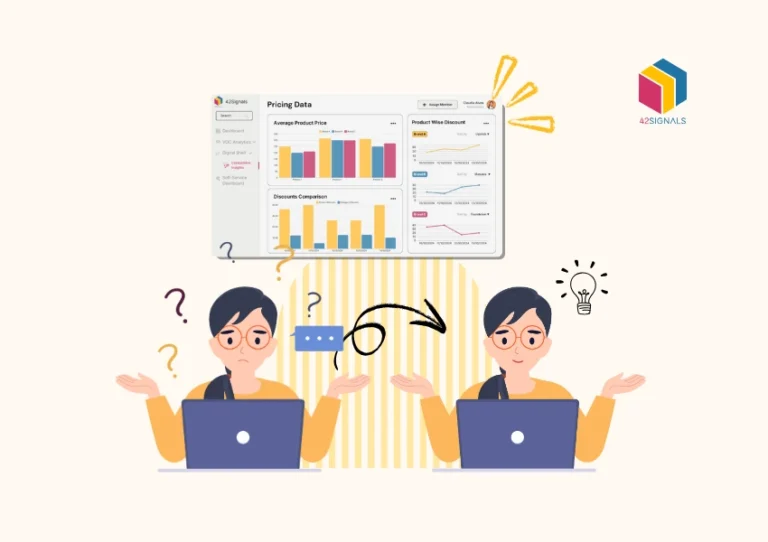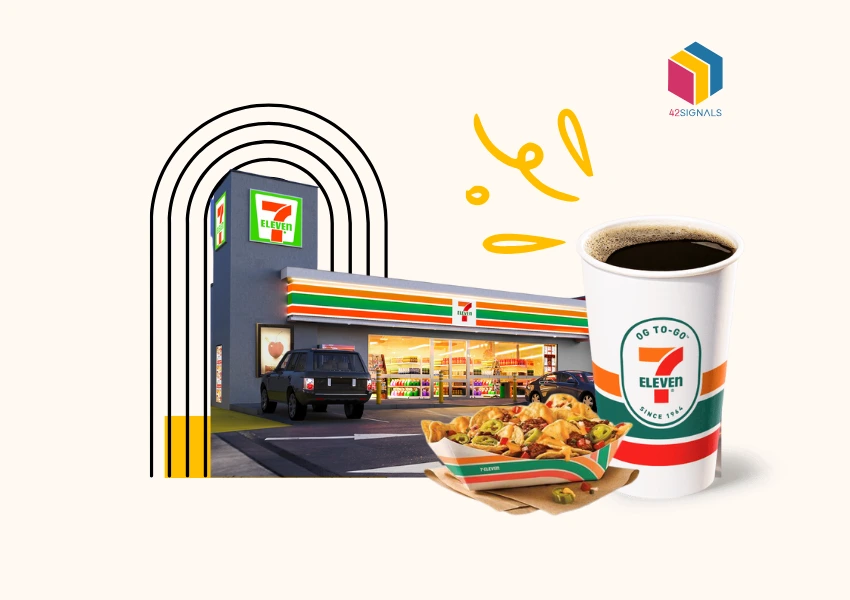Ever thought about when was the first e-commerce sale made or the item sold? Well, it was in 1994, a Sting CD retailing at $12.48. E-commerce has come a long way since then, continuously evolving with new technologies, innovations and e-commerce trends always emerging.
As we move into 2025, several key trends are set to shape the industry and change how we shop online. Let’s look at the top 10 e-commerce trends to watch out for in 2025 –
Top 10 E-Commerce Trends
Artificial Intelligence (AI) Personalization

Image Source: The Motley Fool
AI-driven personalization has become an integral part of the e-commerce trends, allowing businesses to tailor experiences based on consumer behavior and preferences. AI algorithms analyze browsing history, past purchases, and real-time behavior to provide highly targeted product recommendations and customized content. This enhances the shopping experience, making it more engaging and efficient.
According to a McKinsey report, personalization can increase revenue by 10% to 30% and improve customer satisfaction significantly. Businesses that leverage AI-powered chatbots, recommendation engines, and automated customer support will have an edge over competitors in 2025.
Voice Shopping in E-Commerce Trends

Image Source: Voicebot
With the rise of smart speakers like Amazon Alexa and Google Assistant, voice shopping is becoming more prevalent. Consumers are increasingly using voice commands to search for products, compare prices, and make purchases.
In 2025, optimizing e-commerce platforms for voice search will be crucial. Research suggests that voice shopping sales could surpass $40 billion by the end of 2025. Retailers need to ensure their content is voice-search friendly by using natural language processing (NLP) and conversational AI.
Social Commerce

Image Source: Shopify
Social media is no longer just a platform for networking; it has become a major sales channel. Social commerce allows businesses to sell directly through platforms like Instagram, TikTok, and Facebook, making the shopping experience seamless for users.
In 2025, expect to see a significant increase in social commerce, with more shoppable posts, influencer collaborations, and live shopping events. Platforms like TikTok Shop and Instagram Checkout are making it easier than ever for consumers to discover and purchase products without leaving their favorite apps.
Sustainable Packaging

Image Source: Nature Fresh Farms
As consumers become more environmentally conscious, sustainability is becoming a major consideration in e-commerce. Brands are now prioritizing eco-friendly packaging, carbon-neutral shipping, and sustainable sourcing practices.
A study by Nielsen found that 73% of global consumers are willing to change their shopping habits to reduce environmental impact. E-commerce businesses that adopt biodegradable packaging, minimize waste, and offer refill options will gain customer loyalty and align with consumer values in 2025.
Same-Day Delivery in E-Commerce Trends

Image Source: Amazon
Fast and convenient delivery options are now a key expectation for online shoppers. Companies like Amazon and Walmart have set the bar high by offering same-day and even one-hour deliveries in some locations.
In 2025, e-commerce retailers will invest heavily in supply chain optimization, local fulfillment centers, and AI-powered logistics to provide even faster delivery. Businesses that can offer flexible, reliable, and cost-effective shipping options will remain competitive in the evolving landscape.
Augmented Reality (AR)

Image Source: Sprout Social
Augmented Reality (AR) is revolutionizing online shopping by allowing customers to visualize products in real-world settings before making a purchase. Industries such as fashion, beauty, and home decor are leading the way in AR adoption.
Brands like IKEA and Sephora have successfully integrated AR into their shopping experiences, allowing customers to try on makeup virtually or see how furniture fits in their homes. In 2025, more retailers will incorporate AR to bridge the gap between physical and online shopping.
Blockchain and Cryptocurrency – E-Commerce Trends
Blockchain technology is gaining traction in e-commerce, providing greater transparency, security, and efficiency in transactions. Cryptocurrency payments are also becoming more widely accepted, offering a decentralized alternative to traditional payment methods.
With increasing concerns about data privacy and fraud, blockchain can enhance supply chain traceability and protect customer information. Companies like Shopify and Overstock have already integrated cryptocurrency payments, and this trend will continue to grow in 2025.
Mobile Payments

Image Source: Infineon Technologies
Mobile commerce (m-commerce) is dominating the e-commerce landscape, with an increasing number of consumers preferring mobile payments over traditional methods. Digital wallets like Apple Pay, Google Wallet, and PayPal make transactions faster and more secure.
By 2025, mobile payments are expected to account for nearly 50% of all e-commerce transactions. Biometric authentication methods such as facial recognition and fingerprint scanning will further enhance security and convenience for mobile shoppers.
Video Content
Video content is becoming an essential part of e-commerce marketing, helping brands connect with consumers through engaging product demonstrations, tutorials, and live streaming.
In 2025, live shopping events will gain momentum, with retailers using real-time video to showcase products, answer questions, and create interactive shopping experiences. According to a HubSpot report, video marketing can increase conversion rates by up to 80%, making it a powerful tool for e-commerce businesses.
Enhanced Customer Experience

Image Source: LinkedIn
The future of e-commerce trends lies in providing an exceptional customer experience. From personalized product recommendations to seamless checkout processes, businesses must prioritize user-friendly interfaces and personalized interactions.
In 2025, expect to see more brands leveraging data analytics and AI to offer hyper-personalized experiences, ensuring that every customer receives tailored recommendations, discounts, and content based on their preferences and behavior.
These e-commerce trends coupled with the right e-commerce insights can significantly help retail businesses gain traction and improve their sales. Investing in the right areas to improve the customer shopping experience pays dividends in the future.
Frequently Asked Questions
What are the major trends in e-commerce?
E-commerce is evolving rapidly, with several key trends shaping the industry:
- Personalization & AI-driven shopping – Brands use artificial intelligence (AI) and machine learning to offer personalized product recommendations, targeted ads, and customized experiences.
- Voice commerce growth – Smart speakers like Amazon Alexa, Google Assistant, and Apple Siri are driving hands-free shopping experiences.
- Augmented Reality (AR) & Virtual Try-ons – Retailers in fashion, beauty, and home décor are integrating AR to let customers visualize products before buying.
- Social Commerce Expansion – Platforms like Instagram, TikTok, and Pinterest allow seamless in-app shopping, reducing friction between discovery and purchase.
- Sustainability & Ethical Shopping – Consumers prefer eco-friendly packaging, carbon-neutral shipping, and ethically sourced products.
- Subscription-based models – More brands are offering subscription services for consumable goods, personalized boxes, and exclusive memberships.
What are the trends for e-commerce in 2025?
By 2025, e-commerce is expected to transform in several key ways:
- Metaverse Shopping Experiences – Virtual storefronts and digital fashion items will gain traction in Web3-enabled spaces.
- AI Chatbots & Virtual Shopping Assistants – AI-driven customer service will become more sophisticated, handling everything from product inquiries to personalized shopping guidance.
- Hyper-Personalized Marketing – Businesses will leverage advanced data analytics to offer unique promotions tailored to individual customer preferences.
- Faster & Autonomous Deliveries – Drone deliveries, self-driving delivery vehicles, and robotic fulfillment centers will increase efficiency.
- Omnichannel Integration – Seamless shopping experiences across online, offline, social media, and mobile apps will become the norm.
What’s the next big thing in e-commerce?
The next game-changing innovation in e-commerce is expected to be AI-powered autonomous shopping:
- Predictive Shopping – AI will anticipate customer needs and automatically place orders before the user even realizes they need an item.
- Live Shopping & Interactive Commerce – Real-time shopping experiences through influencer-hosted live streams will drive engagement and conversions.
- Cryptocurrency & Blockchain Payments – More retailers will accept digital currencies and use blockchain for transparent transactions.
- AI-Generated Product Descriptions & Visuals – Brands will leverage AI tools like ChatGPT and DALL·E to create dynamic, real-time product content.
What is the future for e-commerce?
The future of e-commerce is hyper-connected, immersive, and driven by automation:
- E-commerce will merge with digital ecosystems – Marketplaces will integrate seamlessly with banking, social media, and digital wallets.
- Frictionless Shopping Experiences – Expect one-click purchases, biometric authentication, and voice-controlled transactions.
- Cross-Border Expansion – Small businesses will sell internationally with simplified logistics and automated translations.
- AI-Powered Customer Retention – Companies will use AI-driven insights to enhance retention through loyalty programs, predictive discounts, and automated reordering.
- Sustainability at the Core – Eco-conscious practices like carbon-neutral deliveries, biodegradable packaging, and local sourcing will be standard.







